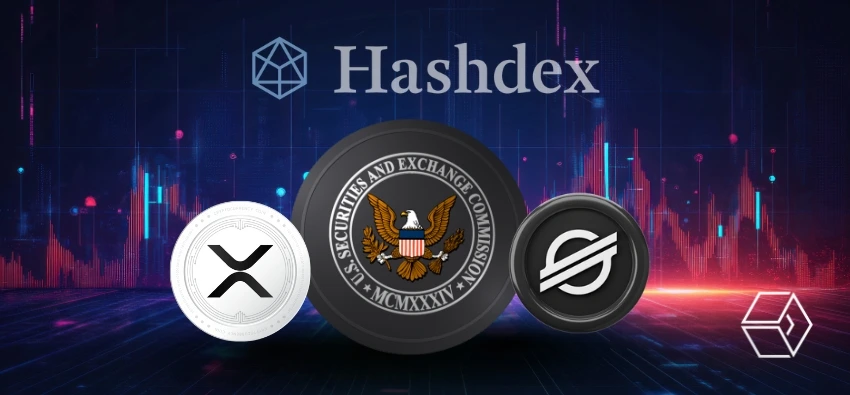
- The SEC approved Hashdex to broaden its ETF holdings with XRP and Solana alongside Bitcoin and Ethereum.
- XRP now accounts for more than 7% of the ETF portfolio, highlighting its growing investor interest.
- Industry experts see this as a step toward mainstream adoption of diverse cryptocurrencies in traditional markets.
The U.S. Securities and Exchange Commission has given approval for Hashdex to widen the scope of its Nasdaq Crypto Index US ETF beyond Bitcoin and Ethereum as it adds new cryptocurrencies such as XRP and Solana to the list. This approval reflects the regulator’s cautious but growing acceptance of crypto-based investment products, particularly at a time when digital assets are becoming more integrated with traditional finance. The move gives investors broader exposure through a regulated product while also sending a message about the maturing role of crypto in global markets.
Hashdex launched its ETF with only Bitcoin and Ethereum, before it went on to broaden its reach through amendment. Following months of scrutiny, the SEC decided to give its approval making XRP the third-largest holding with 7.11% in the fund. Solana follows closely with 4.19%, cementing its role as one of the most watched digital assets on the market.
XRP Strengthens its Role Within the Hashdex ETF as Investor Demand Continues to Grow
XRP’s inclusion in the Hashdex ETF builds on a year where the token has repeatedly captured investor attention. The asset already made headlines when the Brazilian regulator CVM approved the world’s first spot XRP ETF earlier this year, managed by Hashdex in partnership with BTG Pactual. That milestone positioned XRP alongside Bitcoin and Ethereum in regulated markets abroad, and now the U.S. development reinforces its global trajectory.
The ETF’s rebalancing means that more than 3.5 million XRP-related shares are already listed under Hashdex’s management, confirming that demand for diversified crypto funds is rising. Early performance from other XRP-linked ETFs has shown similar enthusiasm, with the REX-Osprey XRP ETF recording $24 million in sales within the first ninety minutes of trading. That same product reached $31 million in trading volume shortly afterward, an impressive show of appetite from both retail and institutional buyers.
What makes XRP’s presence within the Hashdex portfolio especially important is the timing. The SEC faces a wave of new applications for XRP spot ETFs in the coming weeks. Industry analysts expect further approvals, which would bring additional momentum and liquidity to the asset. For traders and long-term investors alike, the growing recognition of XRP in ETFs underscores its evolving position within regulated finance.
Solana Inclusion Reflects Shifting Priorities in Capital Markets as CME Introduces New Futures Products
While XRP grabs headlines, Solana’s addition to the Hashdex ETF represents another significant stride for the broader crypto sector. Solana has been gaining momentum not only for its technical capabilities but also for its rising demand in global markets. Its 4.19% allocation in the Hashdex ETF marks its arrival as a core asset within diversified crypto investment strategies, aligning with growing institutional interest in alternatives to Bitcoin and Ethereum.
Beyond ETFs, Solana’s influence is expanding into derivatives markets. CME Group, the world’s largest derivatives exchange, has already announced that it will roll out Solana and XRP-linked options futures in October 2025, pending final regulatory approval. These products will include both standard and micro-sized contracts, giving traders and institutional clients more tools for hedging and speculation. The introduction of weekday, monthly, and quarterly expiries adds flexibility that appeals to a wide range of participants.
For Hashdex, the inclusion of Solana is not new. In Brazil, the firm already manages a dedicated Solana ETF, signaling confidence in the asset’s long-term potential. The U.S. approval now strengthens its role on a global stage, allowing investors in traditional finance to diversify through a regulated ETF structure. Experts argue that more assets could eventually follow this path as demand for diversified crypto funds grows steadily across global markets.










